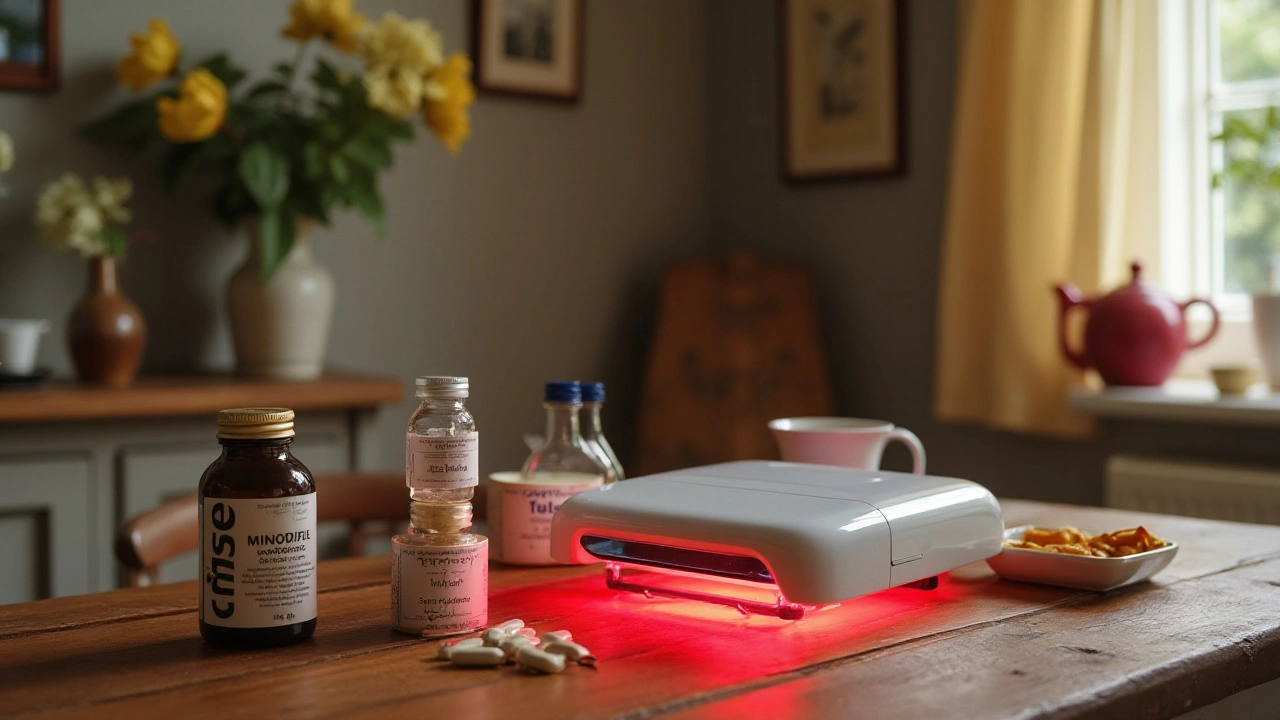Top 5 Propecia Alternatives for Hair Loss in October 2024
If you’ve tried Propecia and are looking for other ways to keep your hair full, you’re not alone. In October 2024 we gathered the most reliable options that work without a prescription or with fewer side effects. From over‑the‑counter gels to cutting‑edge laser caps, there’s something for every budget and comfort level. Below you’ll find quick facts about each treatment so you can decide what fits your lifestyle.
Why Look Beyond Propecia?
Propecia (finasteride) has helped many men slow thinning hair, but it isn’t perfect. Some users report sexual side effects, hormone changes, or the need for a doctor’s script every month. The cost can add up, especially if insurance doesn’t cover it. Plus, not everyone feels comfortable taking a daily pill that alters hormone levels. Because of these concerns, people are turning to alternatives that are either topical, non‑pharmaceutical, or require only occasional visits.
The Five Best Alternatives
1. Minoxidil (Rogaine) – The classic over‑the‑counter foam or liquid works by widening blood vessels in the scalp, delivering more nutrients to hair follicles. Apply twice daily for visible regrowth in 3–6 months.
2. Low‑Level Laser Therapy (LLLT) – Devices like laser combs or caps emit gentle light that stimulates follicle activity. Sessions last about 15 minutes and can be done at home, with results typically appearing after 12 weeks.
3. Platelet‑Rich Plasma (PRP) Therapy – A dermatologist draws a small amount of your blood, spins it to concentrate platelets, then injects the plasma into the scalp. The growth factors help repair damaged follicles. Most people need three sessions spaced a month apart.
4. Saw Palmetto Supplements – This natural extract is thought to block the same hormone pathway as finasteride but with milder effects. Daily doses of 320 mg have shown modest hair thickening in several small trials.
5. Hair Transplant Surgery – For a permanent fix, moving healthy follicles from the back of your head to thinning areas works well. Modern FUE (Follicular Unit Extraction) techniques leave tiny scars and can restore density in a single day.
Each option has its own pros and cons, so weigh factors like cost, commitment time, and whether you prefer a medical or natural route. If you’re unsure, start with the least invasive choice—Minoxidil or LLLT—and see how your scalp reacts before moving to injections or surgery.
Remember that consistency is key. Most hair loss treatments need at least three months of regular use before you notice any improvement. Pairing a product with a healthy diet rich in protein, iron, and vitamins can boost results too.
Ready to try something new? Grab the treatment that matches your schedule, set a reminder for daily application, and track progress with photos every month. You’ll soon see if the alternative you chose beats Propecia for your specific needs.

